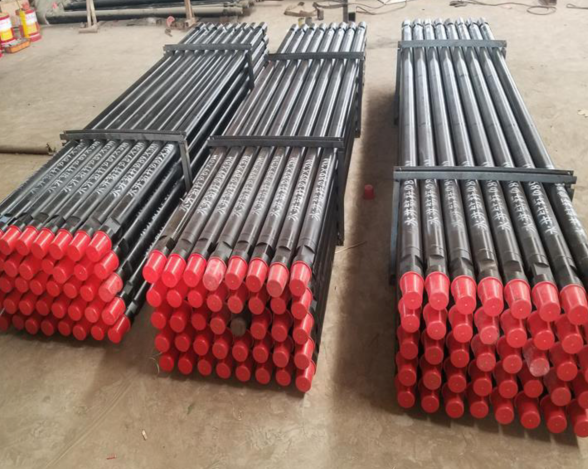The principle of horizontal directional drilling:
Horizontal directional drilling is a method of achieving long-distance horizontal drilling underground, also known as "underground horizontal directional drilling", "inclined well drilling", etc. The technology can penetrate various formation types, buildings, pipelines and reach hard-to-invade areas. It introduces a vibrating drill bit to break rocks and soil with high-speed rotation and oscillation, and then discharges the fragments out of the hole. This vibrational behavior guides the drill bit horizontally, allowing it to advance in a predetermined direction. Under the resistance of solid or liquid, the speed of oscillation drilling can reach several hundred meters per hour, which greatly increases the drilling speed and reduces the drilling cost. Therefore, horizontal directional drilling technology is a promising engineering technology.

Drill pipe material selection:
Since horizontal directional drilling passes through various strata, the
drill pipe faces relatively large pressure, friction and other factors, and needs to have high strength, good toughness, corrosion resistance and wear resistance. The following are several common drill pipe materials and their advantages and disadvantages.
1. High strength alloy steel
This is one of the most commonly used drill pipe materials. It has high strength and toughness and can withstand great tension and pressure. Moreover, this kind of steel has a long life and is not easy to rust and wear. However, the price of high-strength alloy steel is relatively high, which is not conducive to cost savings. Additionally, if it is not properly maintained, problems such as embrittlement and deterioration can occur.
2. Manganese steel
Manganese steel materials perform well in terms of corrosion resistance, wear resistance and toughness. Due to its relatively low strength, the structure needs to be strengthened during design to ensure its tension and compression. However, this type of steel is relatively cheap compared to other steel types. Note that manganese steel may deform during drilling.
3. Stainless steel
In horizontal drilling rig mud,
stainless steel exhibits good corrosion resistance and can maintain the integrity of the drill pipe. However, the relatively low hardness of stainless steel makes it unsuitable for drilling operations that require use under strong vibration. Additionally, stainless steel has limited chemical resistance to corrosive slurries.
4. Titanium alloy
Titanium alloy materials have excellent performance in terms of oxidation resistance and corrosion resistance. Due to its low density and relatively light weight, it is ideal for horizontal drilling at greater depths. However, titanium alloys are more difficult to manufacture and more expensive.
Conclusion:
Regarding the drill pipe materials of horizontal directional drills, different materials have different advantages and disadvantages. When selecting drill pipe materials, multiple factors such as formation conditions, drilling speed, usage environment and cost need to be taken into consideration. If you choose the right material, you can improve drilling efficiency, extend the service life of drill pipes, reduce equipment damage and maintenance costs, etc.
Go here to learn more about "What is oil drill pipe? What types of oil drill pipes are there?"


